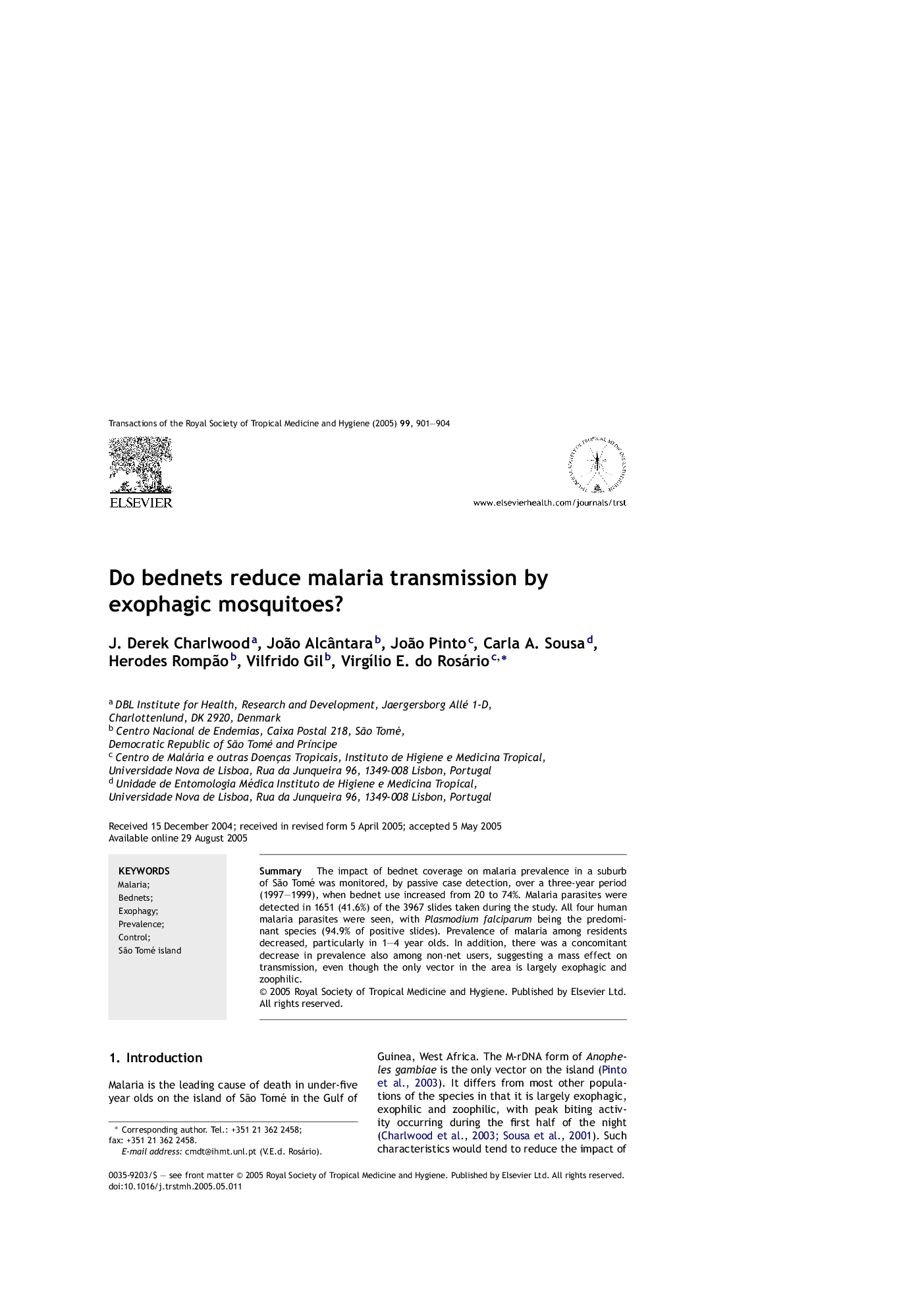| Article ID | Journal | Published Year | Pages | File Type |
|---|---|---|---|---|
| 10030490 | Transactions of the Royal Society of Tropical Medicine and Hygiene | 2005 | 4 Pages |
Abstract
The impact of bednet coverage on malaria prevalence in a suburb of São Tomé was monitored, by passive case detection, over a three-year period (1997-1999), when bednet use increased from 20 to 74%. Malaria parasites were detected in 1651 (41.6%) of the 3967 slides taken during the study. All four human malaria parasites were seen, with Plasmodium falciparum being the predominant species (94.9% of positive slides). Prevalence of malaria among residents decreased, particularly in 1-4 year olds. In addition, there was a concomitant decrease in prevalence also among non-net users, suggesting a mass effect on transmission, even though the only vector in the area is largely exophagic and zoophilic.
Keywords
Related Topics
Life Sciences
Immunology and Microbiology
Applied Microbiology and Biotechnology
Authors
J. Derek Charlwood, João Alcântara, João Pinto, Carla A. Sousa, Herodes Rompão, Vilfrido Gil, VirgÃlio E. do Rosário,
